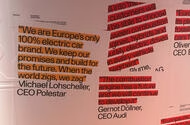Why Is Europe Debating the 2035 Ban on Gasoline and Diesel Cars?
If you’ve been following the headlines, you know the European Union has set a bold target: by 2035, new cars sold must be zero-emission. That means saying goodbye to new gasoline and diesel vehicles. But as the deadline inches closer, the conversation is heating up. Some automakers are pushing for a delay, citing concerns about infrastructure, jobs, and consumer readiness. Others, like Polestar and Volvo, are urging Europe to hold the line and lead the world in clean mobility.
So, what’s really at stake here? And why does this debate matter for drivers, workers, and the planet?
What’s Driving the Push to Delay the Ban?
Let’s be honest: change is hard, especially when it comes to an industry as massive as automotive manufacturing. Some of Europe’s biggest carmakers have started to backpedal on their all-electric promises. Their main arguments? There aren’t enough charging stations, EVs are still too expensive for many buyers, and the technology isn’t quite there yet—especially when it comes to range and reliability.
Industry leaders also worry about jobs. Shifting from internal combustion engines (ICE) to electric vehicles (EVs) means retooling factories, retraining workers, and navigating a whole new supply chain. Some fear that moving too fast could leave thousands unemployed or force companies to relocate production outside Europe.
But here’s the twist: even the skeptics agree that the future is electric. The real question is how quickly we get there—and whether Europe will lead or lag behind.
Why Is Polestar So Vocal About Sticking to the Plan?
Polestar’s CEO, Michael Lohscheller, isn’t mincing words. At the Munich Motor Show, he made it clear: the decision to go all-electric has already been made, and backtracking now would be a mistake. In his view, postponing the 2035 deadline won’t solve the industry’s challenges—it’ll just delay the inevitable.
Lohscheller points out that every major automaker acknowledges the future is zero-emission. So, why wait? He argues that embracing the transition now will unlock new opportunities, from green jobs to technological leadership. Europe, he says, should set the pace for the rest of the world, not follow in the footsteps of more hesitant regions.
He also took a playful jab at rivals who have flip-flopped on their EV commitments, highlighting the mixed messages coming from some of the industry’s biggest names. For Polestar, consistency and ambition are key.
Are Concerns About Charging and Range Still Valid?
Let’s tackle the elephant in the room: infrastructure. Critics often point to a lack of charging stations and limited EV range as reasons to slow down. But Lohscheller isn’t buying it. He believes the industry’s real challenge is to make EVs more affordable and competitive, not to wait for a perfect world.
Recent data backs him up. According to the European Alternative Fuels Observatory, the number of public charging points in the EU grew by over 40 percent in 2023 alone. Battery technology is also advancing rapidly, with many new models offering ranges that rival—or even surpass—traditional cars.
Of course, there’s still work to do, especially in rural areas and for people without home charging. But the pace of progress suggests that these hurdles are surmountable, especially if policymakers and industry leaders stay committed.
How Could Delaying the Ban Affect Jobs and the Economy?
It’s easy to assume that slowing down the transition would protect jobs. But the reality is more complicated. A 2022 report from the European Commission found that while some traditional auto jobs will disappear, the EV shift could create up to 2 million new positions in battery manufacturing, software, and clean energy.
Lohscheller argues that postponing the transition could actually put more jobs at risk. Why? Because global competition is fierce. If Europe hesitates, it could lose its edge to regions that move faster on clean technology, like China or the US. That could mean missed opportunities—not just for workers, but for the entire European economy.
What’s the Real Risk of Changing Course Now?
There’s a bigger picture here. Climate change isn’t waiting for anyone. Road transport accounts for nearly a fifth of Europe’s greenhouse gas emissions, according to the European Environment Agency. Delaying the transition to zero-emission vehicles could make it much harder for the EU to meet its climate goals—and undermine its credibility on the world stage.
Polestar’s stance is clear: the sooner Europe commits, the sooner it can reap the benefits. That means cleaner air, healthier cities, and a stronger, more innovative auto industry.
What Should Drivers and Car Buyers Expect Next?
If you’re in the market for a new car, all this talk of bans and deadlines might sound overwhelming. But here’s the good news: EVs are getting better, cheaper, and more accessible every year. Incentives, improved charging networks, and a growing range of models mean there’s never been a better time to consider going electric.
Of course, the transition won’t happen overnight. But with clear policies and industry commitment, the road ahead looks promising.
The Bottom Line: Why This Debate Matters for Everyone
Europe’s decision on the 2035 ban isn’t just about cars—it’s about the kind of future we want. Will the continent lead the charge toward clean mobility, or play catch-up as others race ahead? Polestar’s message is simple: don’t wait for perfect conditions. Embrace the challenge, drive innovation, and seize the opportunity to shape a greener, more competitive Europe.
Change is coming, whether we’re ready or not. The real question is, who will set the pace?

